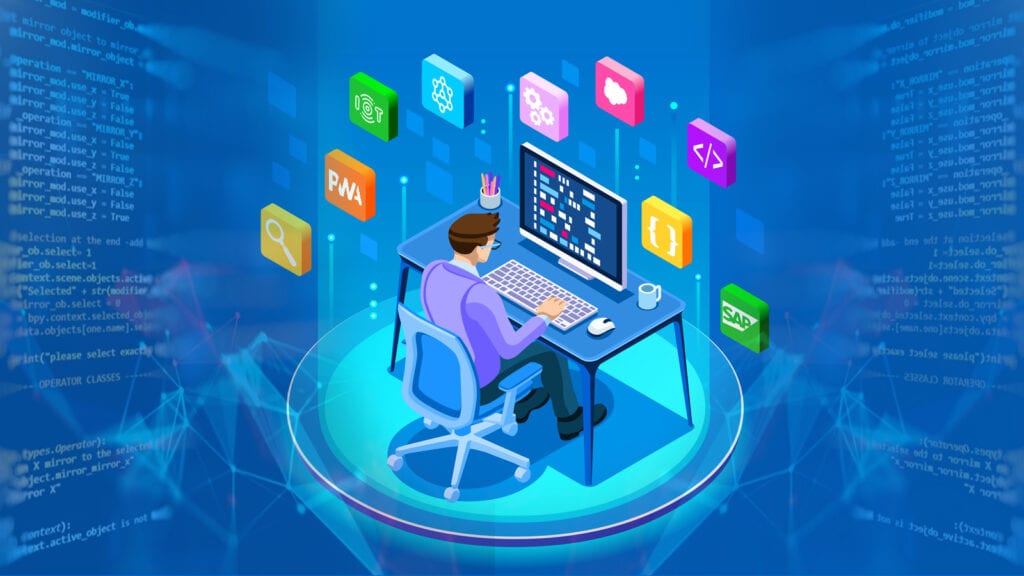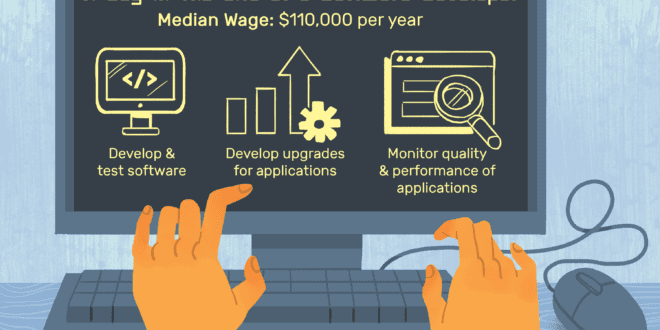Developing functional and secure software for your business is one of the most effective ways of growing your business. The design of custom software solutions allows them to meet the custom needs of the business. That means such software programs, packages, and suites will take some time to meet the required standards of your business.
With that, it’s important to note that the purpose of a software program is the major determinant of the time needed to develop the software. However, it takes an average of 4 to 9 months for a software development project to be completed. This comprises the time required to design, develop, test, and release the software.
Well, this might seem like a long time for most people. However, a good and durable software program needs careful engineering for it to guarantee its sustainability and extensibility. This post shall discuss the stages involved in software development, which will make you understand why the process can be longer than expected.
The designing stage

This is the first stage of a software development project, which takes around 2 to 4 weeks. This stage focuses on basically designing the software. Just like a normal construction project, a software development project needs to have a comprehensive engineering plan. Then, you should proceed to create its structure, and then complete the development project following the requirements of the product.
The designing stage gives the developers a clear vision of the software that they need to develop and how to develop it. This stage emphasizes defining the major features of the software, as well as user requirements. Typically, you shouldn’t consult with the software development team to come up with the following:
- Core features
- Different interface requirements
- System requirements
- End-user definitions, as well as their experience with the software
- Preliminary scope of the development—what should be built in the first stage, second, and consecutive stages
The time frame of this stage is variable and greatly depends on your availability to answer questions from the development team, and also make the decisions required for the project to proceed. At the end of the designing stage, both the client and developers will have a clearly-defined design of the new software. The experts at Entrance Consulting say that it’s essential to ensure that you work hand in hand with the developers during this stage to avoid unwanted surprises down the line.
The development stage

The development of the new software solution can start once you have the blueprint. Generally, this will take an average of 3 to 6 months. This stage will need someone to manage and coordinate the development team. Thus, you will need a project manager to keep the software development team organized and within the set timeframe.
Moreover, the development team has some critical roles too:
- Software developers are required to write the needed code
- Technical architects help to design the structure
- Designers help with designing the user experience (UX) or user interface (UI)

The result of the final stage is a full build software. It doesn’t matter whether the product is lean, but so long as it meets the specifications of the blueprint created in the designing stage.
Before the actual development starts, the project manager should take a few days to plan the development teams’ schedule, assign tasks to different team members, and backlog the tasks that are not important. Besides, it’s the responsibility of the project manager to identify and mitigate any risks to make sure that the project stays on course.
The first thing that the team needs to develop is the framework or structure. This helps in determining the required technologies, to see if they can work together. It is the duty of the technical architect to do this, and it requires around a maximum of 14 days to be complete. However, this will depend on the intricacy of the system incorporations or if certain uncommon technologies are integrated.
After finalizing the product design and structure, the actual coding stage now starts. This is the longest stage of software development projects, and it requires an average of 3 to 6 months. Additional developers can be brought on board in cases where the software needs to be delivered within a short timeframe.
However, this comes with a major challenge. Adding extra developers to the current team will increase the size of the team. This in turn makes it harder to manage the team, which risks delaying the entire project.
The compliance stage

This is the last stage in the software development process. The compliance stage takes around 3 to 6 weeks. Generally, it involves comparing and testing the final software against coding standards and usability. This can be compared to the final inspections for compliance with the safety code in the construction industry.
Typically, the types of tests required for software do vary. However, every software development project should at least undergo the following tests:
- Coding review – this ensures that the considerations for growth and extensibility were made when writing the code. Inspecting the code allows the client to check whether the developers followed recognized protocols and styles. Besides, the client can check whether the software is stable, easy to manage, and open for future updates.
- End-to-end testing – this testing involves utilizing all the features of the software, as the end-users would do. Furthermore, the test allows developers to check how various elements of the code and other integrated technologies can work together. Technically, features are tested separately during the development stage. However, the back-to-end testing combines all the features, to check whether they work together.
- User acceptance testing – also known as UAT, this is a comprehensive inspection performed by the client to ensure that the final product meets their requirements. During this time, the client is normally keen to check whether the developers missed anything when testing the software.
Other than these tests discussed above, you the developer, or the client can suggest additional tests to be done. Some of these tests include checking whether the software functions on various operating systems for PCs, or on different web browsers, or different devices, such as Android, iOS, or Blackberry.
If the software will have many users at the same time, or process high volumes of data, it’s essential to perform additional tests. These tests should check high-traffic performance and load times, to ensure that the software remains stable. The last test should be to check how the software can handle different situations, such as corrupt files, invalid data value, or timeouts. Also, the test should check how the software integrates with third-party systems. If this sparks your interest you can learn about api integration tools here.
 Imagup General Magazine 2024
Imagup General Magazine 2024



